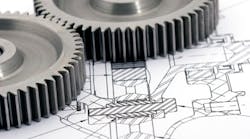It is always encouraging to meet with customers and partners to explore new possibilities for engineering and technology. Doing so with global manufacturers makes it all the more interesting, yet also more challenging as we reach the crossroads of industries and technologies. From this perspective, we are presented today with a rich field of opportunities for new innovations and new thinking.
Much of that innovation is manifesting itself through the convergence of industry with the same products we use as consumers. For example, this week at CES 2013, Ford (IW 500/6) invited developers to create apps and customized driving experiences, by opening up its Sync AppLink Platform. This collaboration has the potential to provide a previously unimaginable integration of software platforms into cars to create next generation experiences.
This process is rapidly increasing today across multiple manufacturing and engineering segments. The leverage of technology is pervasive, be it at the consumer or industrial level, as we adopt embedded technologies, M2M, cloud, substantially improved user interface, etc.
Manufacturers harnessing these new and upcoming technologies aim to make significant business impact through new products in the global market with the increased acceleration they enable.
Even companies that are well established in a defined market with a set of mature and proven products are embracing change with the advent of omnipresent connectivity and new technologies.
As a result, engineering has become one of the most heavily invested areas for some of these companies. In many, embedded, platform and software engineering now account for 40% to 50% of the R&D investment, which is a massive jump from just a few years ago.
In the recently concluded Embedded Technologies event in Yokohama, Japan, more than 40% of the participants were from industrial companies -- a shift from the earlier dominance of consumer-oriented companies as early adopters.
Higher growth in emerging markets compared to mature markets in the medium- to long-term is the opportunity no-one wants to miss, and this certainly calls for innovative and competitive products across all industries, be it auto, medical, consumer, industrial, etc.
Acceleration in product development and engineering is equally critical in mature markets like the U.S., which must seek new ways to achieve market competitiveness through such technologies as digital manufacturing, robotics, energy efficient systems, and M2M capabilities.
Managing Your R&D Spend
In 2011, Global R&D spend by commercial organizations and governments was about $1.3 trillion. While this represents an increase in absolute terms over the past 3 years, total R&D investment has lagged compared to rate of revenue increase for the top 1000 R&D companies in the world.
This trend is also reflected in a recent report from Booz & Co., which showed that although overall R&D is expected to be about $1.7 trillion by 2020, Global R&D at a macro-level will decline from 2.2% of Global GDP at the beginning of this decade to 1.9% in the same time frame.
This projection tells us that companies must become more effective in managing their engineering and R&D spend in order to maximize their returns. To do so, they will need to deliver a greater business impact through better value creation by shifting their focus and investment into high yield products and cutting investment in low cash generation products with low market shares.
With several hundred billion dollars at stake, higher engineering efficiencies are needed to drive this portfolio optimization to fund newer areas of growth, and operational maturity needs to be extremely high and proven with virtually no risk of failure.
Our world is rapidly changing all around us thanks to the development and adoption of new technologies and products like such as self-driving cars, vehicle-to-vehicle communication, sensor-based products, internet of things, smart devices, 3D printers, cloud, everything mobile and natural user interfaces. In a fascinating and recently published report, GE talks about the “Industrial Internet” and how the combination of intelligent machines, advance analytics and people at work has the potential to impact the global GDP by $10 to $15 trillion over the next 20 years. This is about 15% to 23% of the current global GDP and has the potential for huge impact.
As our world gets faster and arguably smaller, successful product and technology companies will drive higher engineering experiences which create significant business impact through accelerated product launches, and drive value through innovation and improved engineering efficiencies, all by leveraging and adopting new and disruptive technologies.
Sandeep Kishore is the executive vice president and global head of sales and practice for Engineering and R&D Services at HCL Technologies.



